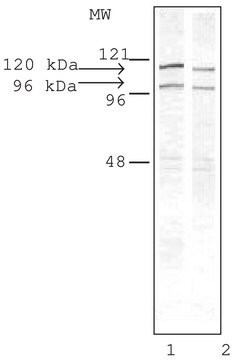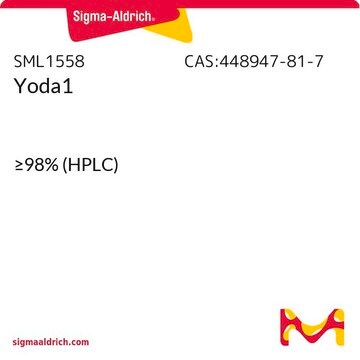G0154
Guillard′s (F/2) Marine Water Enrichment Solution
50 ×, liquid, suitable for plant cell culture
Synonym(s):
seawater medium
About This Item
Recommended Products
sterility
sterile-filtered
form
liquid
concentration
50 ×
technique(s)
cell culture | plant: suitable
application(s)
agriculture
shipped in
dry ice
storage temp.
−20°C
General description
Application
- for culturing Chromera velia CCMP2878 to study coral response to Chromera infection
- to enrich Baltic Sea water to culture unialgal stock of Symbiodinium strains
- as a supplement in water culture medium to culture Chaetoceros affinis (CA) inoculum
Formula variant
Reconstitution
related product
Storage Class Code
12 - Non Combustible Liquids
WGK
WGK 1
Flash Point(F)
Not applicable
Flash Point(C)
Not applicable
Certificates of Analysis (COA)
Search for Certificates of Analysis (COA) by entering the products Lot/Batch Number. Lot and Batch Numbers can be found on a product’s label following the words ‘Lot’ or ‘Batch’.
Already Own This Product?
Find documentation for the products that you have recently purchased in the Document Library.
Customers Also Viewed
Protocols
Phycology media can be prepared from concentrated solutions or from powdered salt mixtures. The concentrated solutions are complete, including vitamins, and should be stored frozen.
Phycology media can be prepared from concentrated solutions or from powdered salt mixtures. The concentrated solutions are complete, including vitamins, and should be stored frozen.
Phycology media can be prepared from concentrated solutions or from powdered salt mixtures. The concentrated solutions are complete, including vitamins, and should be stored frozen.
Phycology media can be prepared from concentrated solutions or from powdered salt mixtures. The concentrated solutions are complete, including vitamins, and should be stored frozen.
Our team of scientists has experience in all areas of research including Life Science, Material Science, Chemical Synthesis, Chromatography, Analytical and many others.
Contact Technical Service










